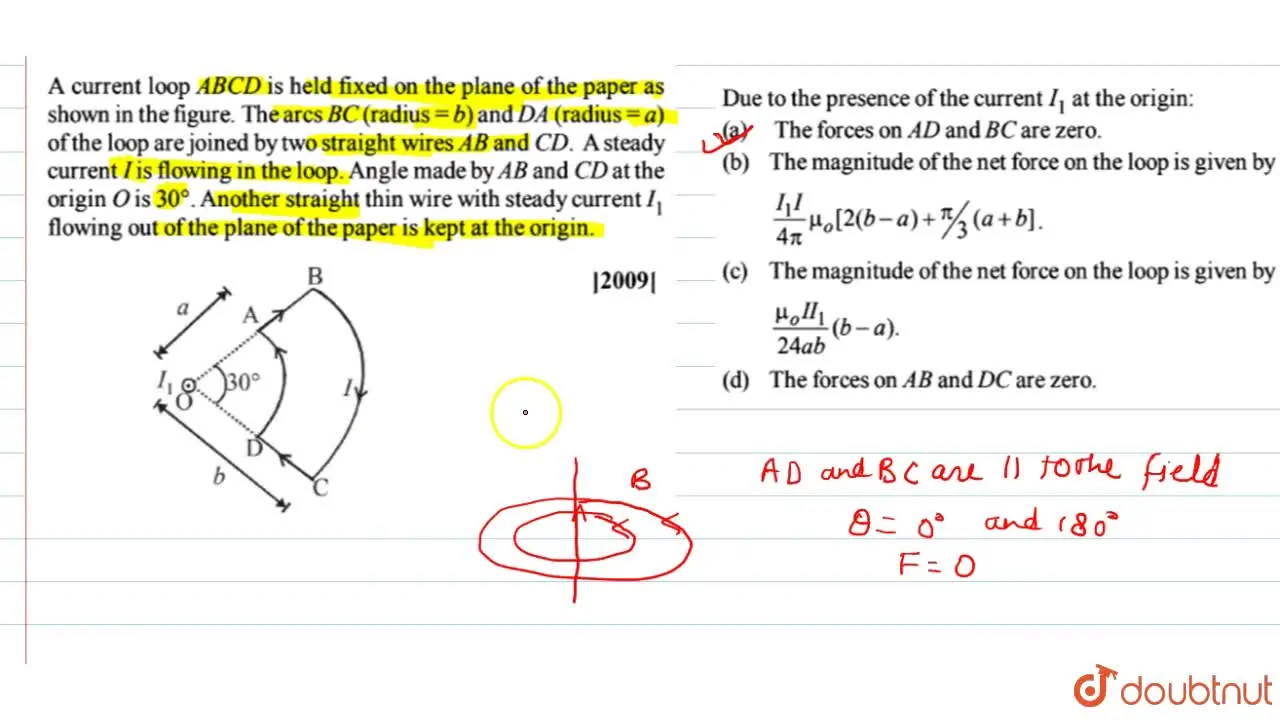A current loop is held fixed on the plane of the paper as shown in figure. The arcs of the loop are joined by two straight wires at the origin is 30^(@)I_(1)I_(1) at the origin:
the force on AB and DC are zero
the force on AD and BC are zero
the magnitude of the net force on the loop is given by
the magnitude of the net force on the loop is given by .
The correct Answer is:b
Magnetic field due to outward current at the origin are concentric circles and hence parallel to current in branches AD and BC. So no magnetic force will act on these but the same magnetic field is perpendicular to AB and CD, thus, it will apply magnetic force on AB and CD. Although force on AB and CD will be equal and opposite, the net force on the complete system will be zero. Therefore, option (b) is correct.
Related Playlists
- BOOK - MODERN PUBLICATIONCHAPTER - MOVING CHARGES AND MAGNETISMEXERCISE - COMPETITION FILE (C. MULTIPLE CHOICE QUESTIONS)28videos
MOVING CHARGES AND MAGNETISM
- BOOK - MODERN PUBLICATIONCHAPTER - MOVING CHARGES AND MAGNETISMEXERCISE - COMPETITION FILE (D. MULTIPLE CHOICE QUESTIONS)10videos
MOVING CHARGES AND MAGNETISM
- BOOK - MODERN PUBLICATIONCHAPTER - MOVING CHARGES AND MAGNETISMEXERCISE - COMPETITION FILE (A. MULTIPLE CHOICE QUESTIONS)38videos
MOVING CHARGES AND MAGNETISM
- BOOK - MODERN PUBLICATIONCHAPTER - MAGNETISM AND MATTEREXERCISE - CHAPTER PRACTICE TEST FOR BOARD EXAMINATION16videos
MAGNETISM AND MATTER
- BOOK - MODERN PUBLICATIONCHAPTER - NUCLEIEXERCISE - CHAPTER PRACTICE TEST FOR BOARD EXAMINATION15videos
NUCLEI
Similar Questions
A current loop ABCD is held fixed on the plane of the paper as shown in figure. The arcs BC(radius=b)andDA(radius=a) of the loop are joined by two straight wires ABandCD at the origin O is 30^(@).A¬herstraightth∈wirewithsteadycurrentI_(1)flow∈goutofthepla≠ofthepaperiskeptattheorig∈.<br><imga≤ocr_imageload∈g=lazysrc=https://d10lpgp6xz60nq.cloudfront.net/physics_images/JMA_MCM_C14_119_Q01.pngwh=80%mx-autosty≤=background:white;><br>Themagnitudeofthemag≠ticfield(B)due→thel∞pABCD at the origin (o) is :
View SolutionIn the given figure, the loop is fixed but straight wire can move. The straight wire will
 View Solution
View SolutionA long current carrying wire , carrying current I1 such that I1 is flowing out from the plane of paper is placed at O. A steady state current I2 is flowing in the loop ABCD
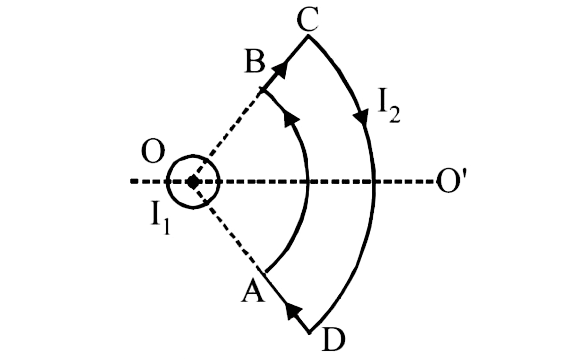 View Solution
View SolutionA long current carrying wire, carrying current I1 such that I1 is flowing out from the plants of paper is placed at O. A steady state current I2 is flowing in the loop ABCD.
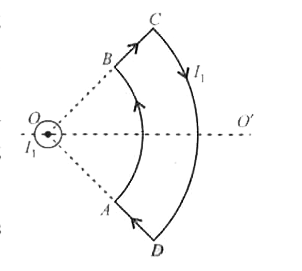 View Solution
View SolutionTwo long, straight, parallel wires are 1.00m apart (as shown in Fig). The upper wire carries a current I1 of 6.00A into the plane of the paper.
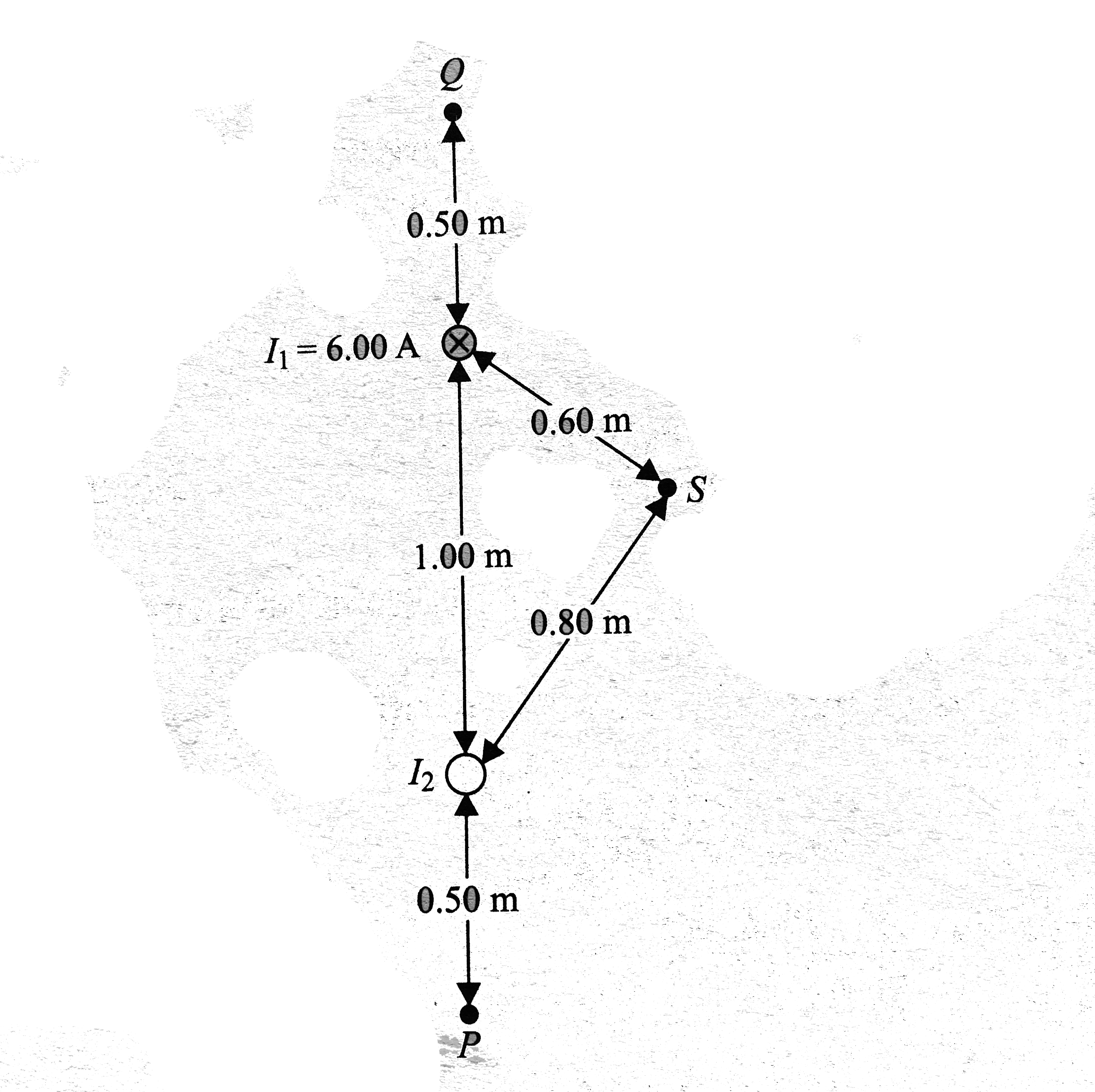
What is the magnitude of the net field at S?View SolutionTwo long, straight, parallel wires are 1.00m apart (as shown in Fig). The upper wire carries a current I1 of 6.00A into the plane of the paper.
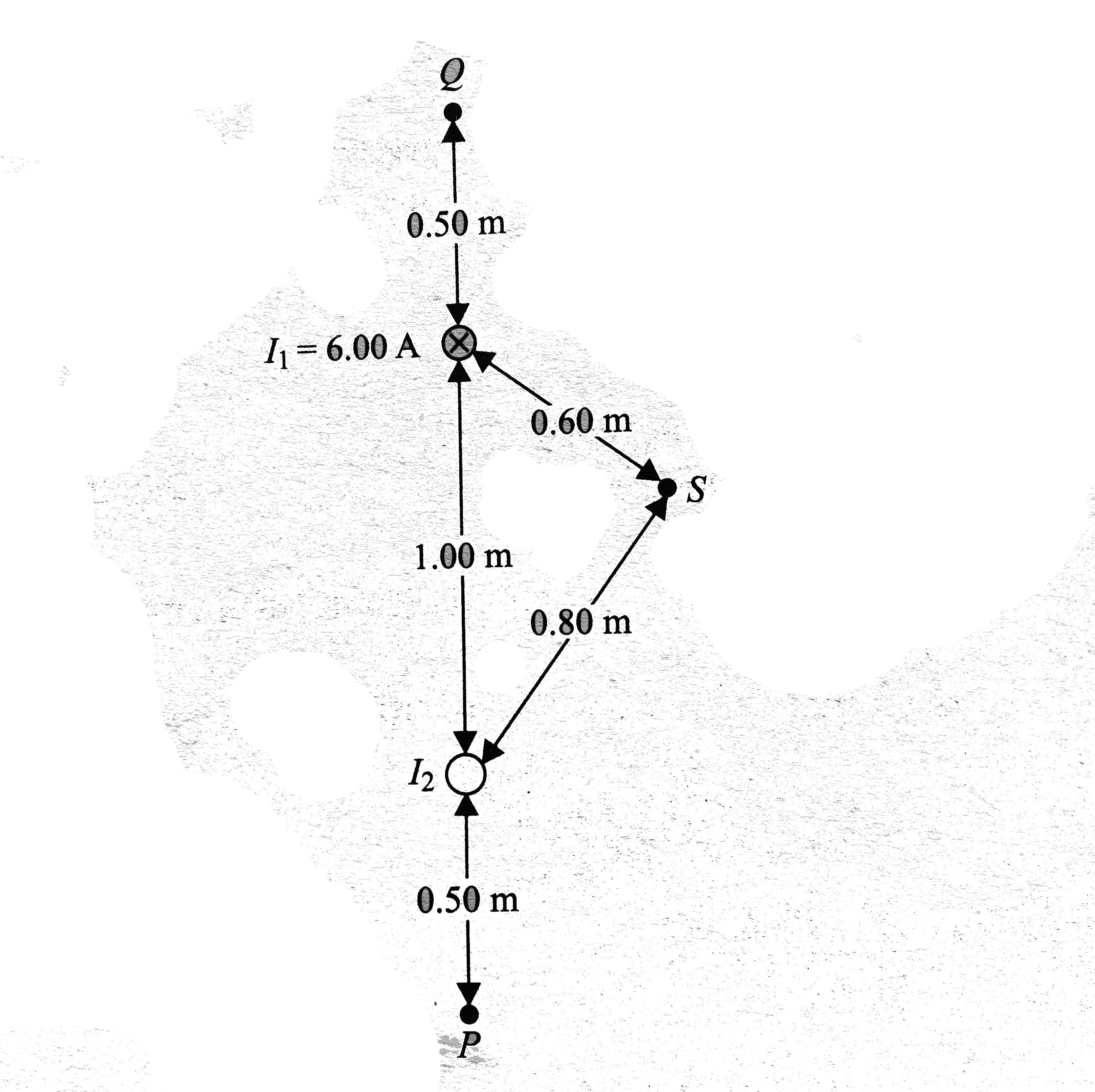
What is the magnitude of the net field at Q?View SolutionA current I flows in a long straight wire (into the plane of the paper) with cross-section having the from of a circular are of radius R a shown in the figure. Find the magnetic induction at the point O.
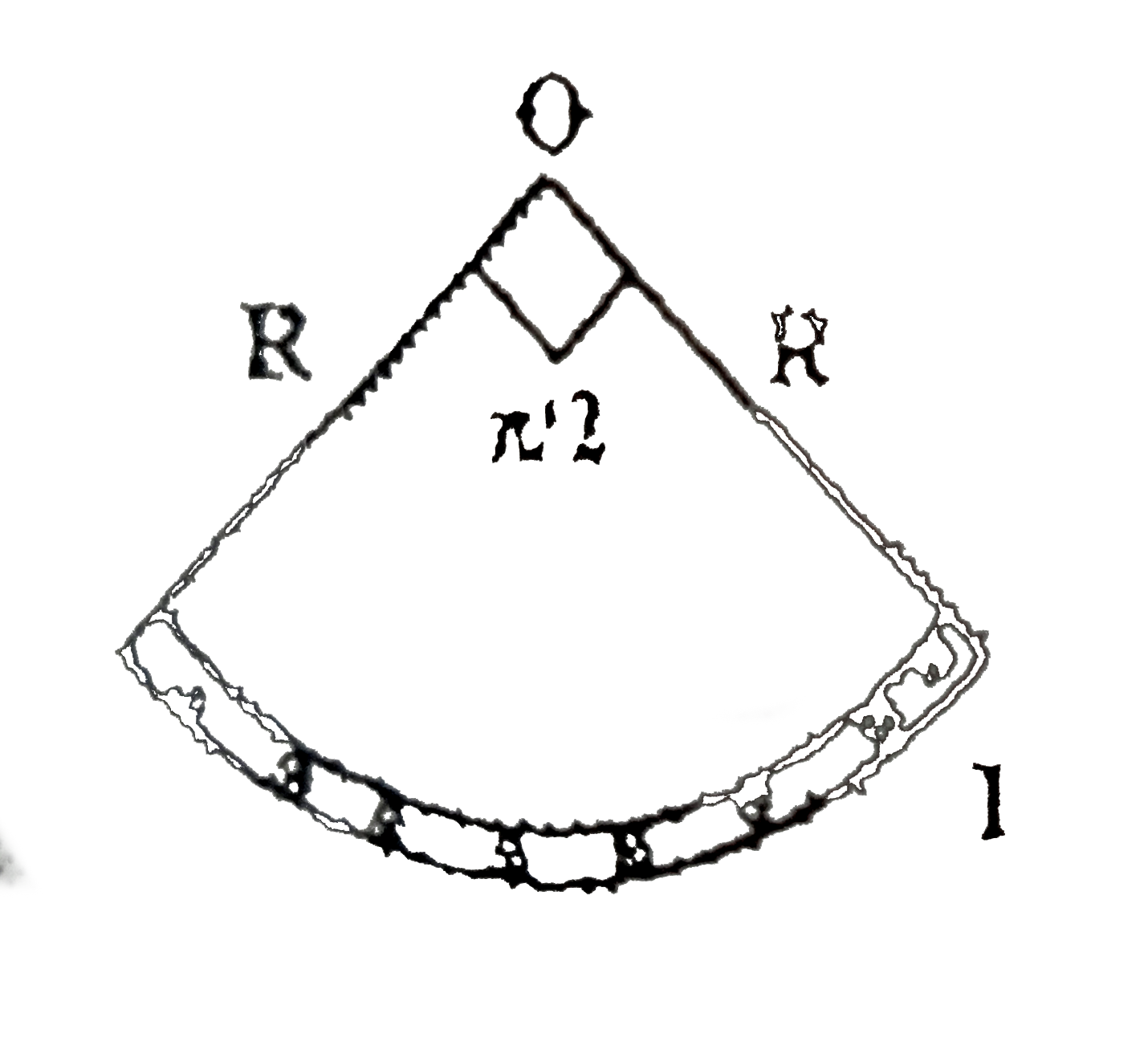 View Solution
View SolutionIn the given figure, the loop is fixed but straight wire can move. The straight wire will
 View Solution
View SolutionA loop with current l Is in the field of a long straight wire with current l0.The plane of the loop is perpendicular to the straight wire.Find torque acting on the loop.
 View Solution
View SolutionA square loop of wire carrying current I is lying in the plane of paper as shown in Fig. 1.141. The magnetic field is present in the region as shown. The loop will tend to rotate
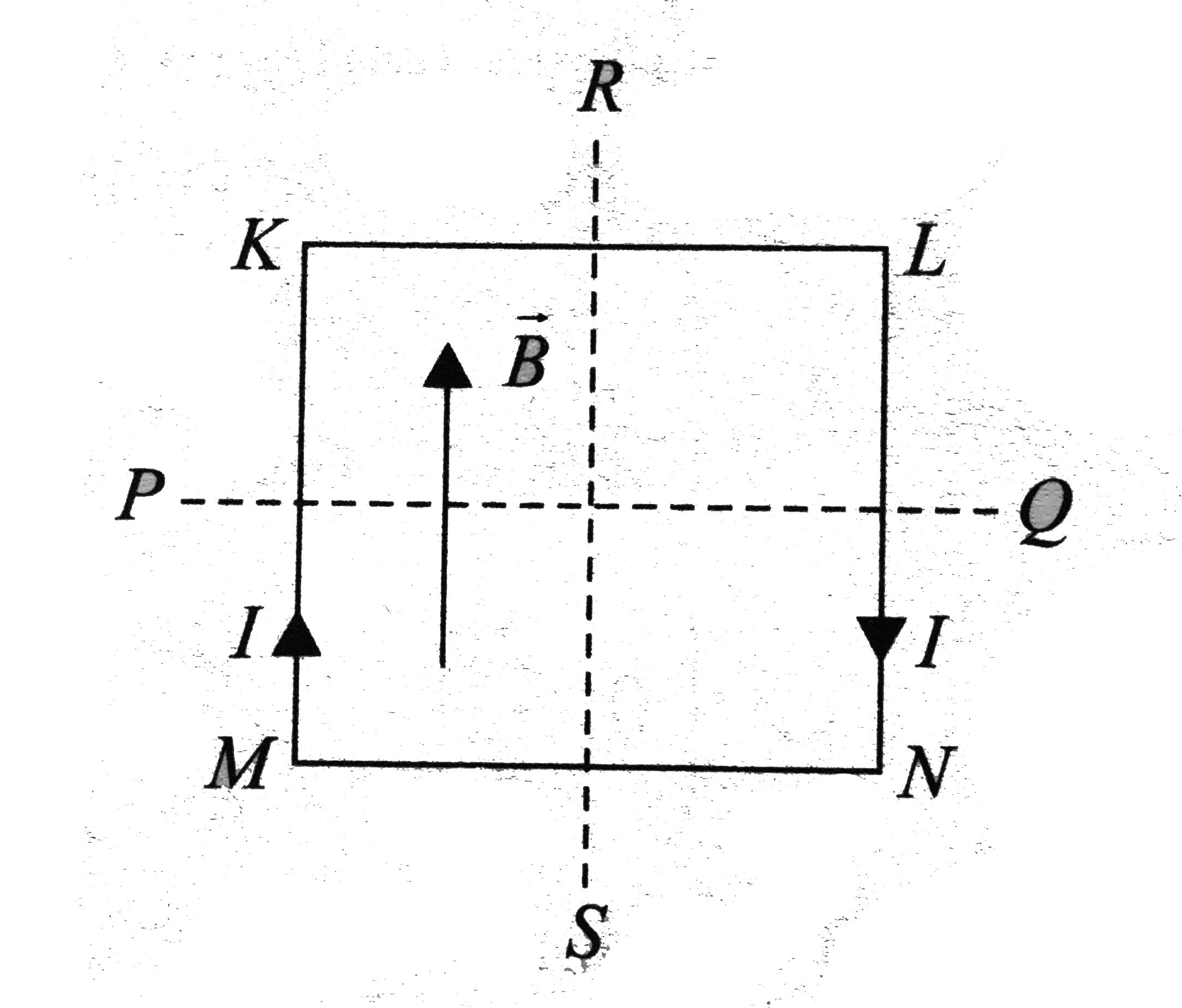 View Solution
View Solution

